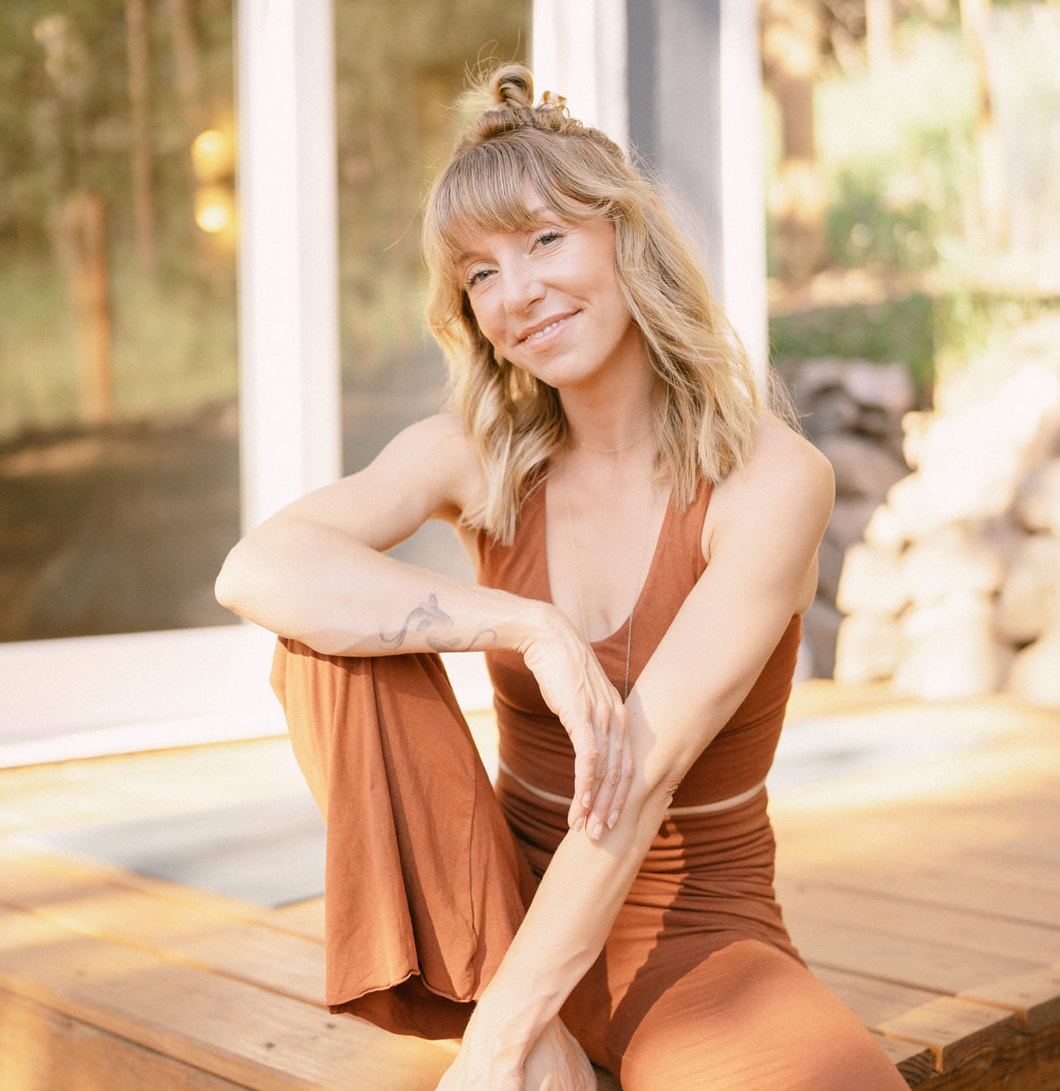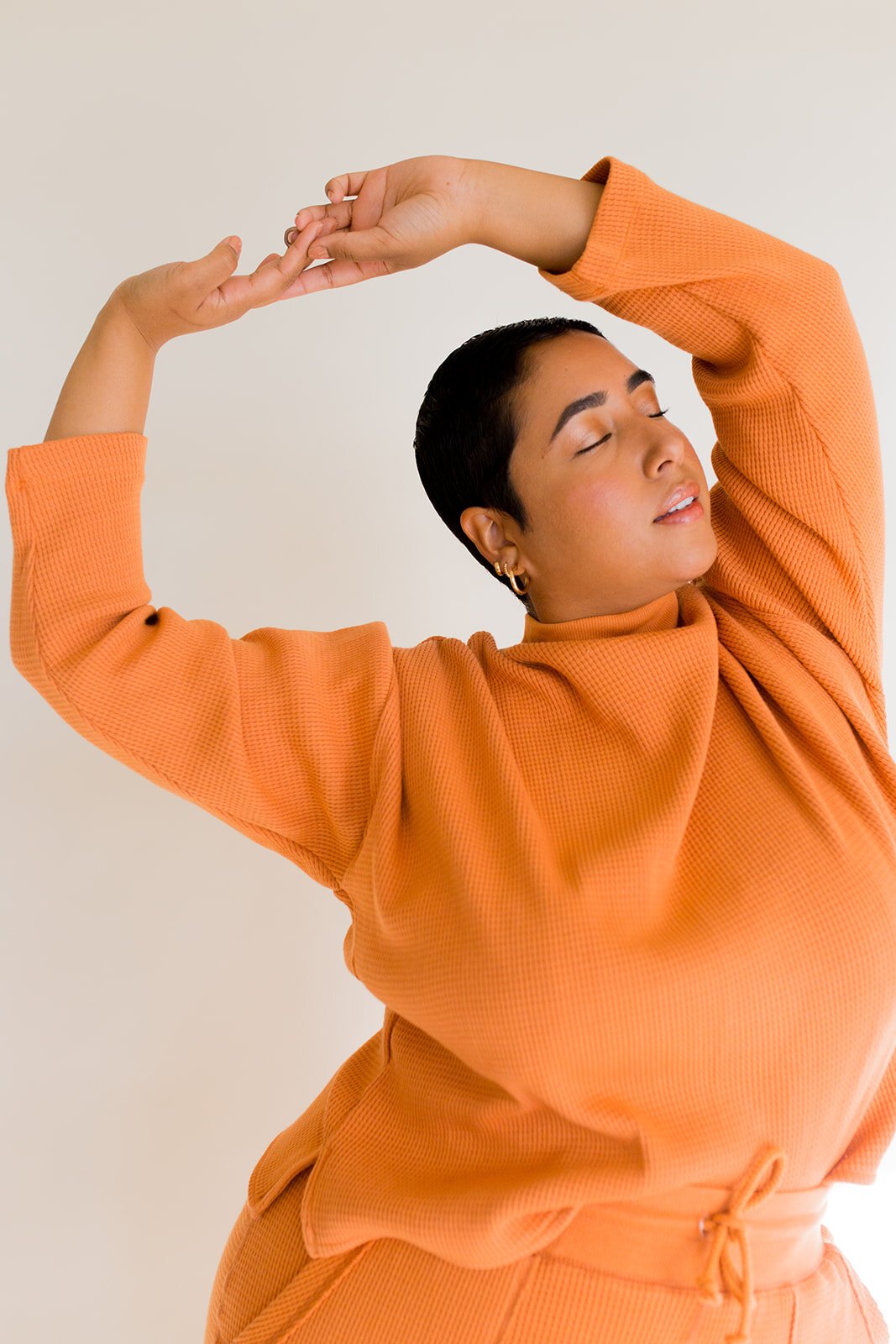
Why I Started A Women’s Circle In My Small Town
“How might your life have been different if there had been a place for you?
A place for you to go…a place of women, to help you learn the ways of women…
a place where you were nurtured from an ancient flow sustaining you and steadying you as you sought to become yourself.
A place of women to help you find and trust the ancient flow already there within yourself…waiting to be released…
How might your life have been different?”
– Judith Duerk, “Circle of Stones”
As a new mother in a new place, I yearned for a deeper bond with the other mothers in my community. But I struggled to engage in meaningful discussions while chasing a toddler.
Some of my oldest wounds had reopened from bullying and broken female friendships in my past. Insecurities I thought I had overcome resurfaced, needing healing. Becoming a mother was deeply transformative yet I felt lonely in the experience and longed for a space to enter this new era. I knew that to be the best mom to my little girl, I had to give attention to this part of me.
“Becoming a mother was deeply transformative yet I felt lonely in the experience and longed for a space to enter this new era.”
It’s likely that in ancient times, women sat in circles. That they shared in raising children, aided in healing, and supported one another. With our modern, patriarchal approach, we’ve lost access to a sense of feminine connection and community. I craved this, wanting to find my own circle to share with other women — looking into their eyes and witnessing one another. I wanted to feel less alone in my experience. I wanted to cry together and hold each other’s hands.
So to help me remember the potent wisdom contained in relationships between women, I started facilitating my own women’s circles in my small town in Colorado.
The history of women’s circles
Throughout history, women have gathered in circles across different cultures, belief systems, and locations. These circles often used the natural world to honor a sacred time in a woman’s life, such as the start of her moon cycle, a new baby, a wedding, and everything in between.
The Red Tent is a fictional example of an ancient women’s circle — and serves as a beautiful example for us today. It depicts a ritual for the beginning of a woman’s menstrual cycle when it starts in adolescence. Imagine a culture that honors this important time in one’s life. Imagine a circle of women of all ages coming together to support you through wisdom and connection instead of shame or abandonment.
“The modern women’s circle is a place for non-competitive sharing amongst those who don’t identify with the masculine ideal.”
This is the thinking behind a women’s circle. It is a space and time to honor one another, to teach one another, and to inspire one another. The modern women’s circle is a place for non-competitive sharing amongst those who don’t identify with the masculine ideal. All who want to earnestly engage in this practice are welcome.
Women’s circles can heal the wounds of the past. They strengthen bonds with other women and gender-nonconforming members of our communities through radically honest sharing. Which was exactly what I was looking for.
I set a date, created an event on my website, and began spreading the word. I was nervous about creating this event, but I felt that it needed to happen. I couldn’t be sure it ever would if I didn’t try it myself.
How I built a women’s circle
To prepare, I spent time in meditation and connecting to my yogic studies. I also looked to the moon cycles and astrological calendar to choose a theme and date. While women’s circles don’t have to be esoteric or spiritual, I drew from my knowledge and interests to craft the experience. It’s what has guided me in the past, and works best for my thinking.
“While women’s circles don’t have to be esoteric or spiritual, I drew from my knowledge and interests to craft the experience.”
I themed my first circle around Cancer season and the New Moon. We anchored our discussions with Cancer’s nurturing essence and lunar guidance. Other approaches might lead you to different themes, but it is helpful to give your session a focus. From there, I created a link to sign up on my website. I marketed it by sending emails, texts, and posts on social media, as well as posts to my town’s local Facebook group, sharing the information with people I knew.
My first circle brought six women — some I knew and some I didn’t. The night was magical and everything I hoped it would be. Since this first circle, I’ve had many and developed a format I use as a framework for ongoing gatherings.
We always start by sharing our names, where we live, how many kids we have, and how we feel. From there, I open with a guided meditation and a journal prompt. We spend time journaling, then we go around sharing based on the theme for the night.
“We always start by sharing our names, where we live, how many kids we have, and how we feel.”
I also create an altar in the center of the circle and encourage participants to bring an item to add to the altar. In one instance, I asked participants to bring something that represented our birth stories. This could be something simple like a bundle of sage, a swath of fabric, or a small artwork. As we share, the altar transforms into a beautiful symbol of everyone’s stories that we can honor and witness.
Recently, I’ve been teaming up with other women to add depth and perspective to my circles. My favorite so far was this birth story-sharing circle I’ve been speaking about. I co-led it with Morgan Rodríguez, a local doula and Curanderismo practitioner who led a cacao ceremony.
“This community has become what I always dreamed ‘the village’ would be like.”
It was profound to hold space for one another opening up about our birth stories in such a present and held way. Women shared parts of their stories with strangers they’d never shared with anyone else. We cried and laughed together. But, most importantly, we were present to witness the lived experience we each had.
Now, I host a monthly mother’s circle. That’s become a strong community of women who support each other outside our circles as well. We talk often, and hang out with our children so they can get to know each other too. This community has become what I always dreamed “the village” would be like.
How to start your own women’s circle
While my experience led me to create women’s circles centered largely around mothering, these circles can focus on whatever type of sharing calls to you. Women’s circles are not defined or confined by motherhood, nor are they defined by the participation of those with feminine biological markers. Women’s circles are for anyone willing and ready to engage in this practice of open, honest, and safe sharing.
“Women’s circles are not defined or confined by motherhood, nor are they defined by the participation of those with feminine biological markers.”
If creating an in-person gathering with the women in your community appeals to you, do it! Listen to the call and go for it. I guarantee your community will be better for it.
- Make it your own | No matter your spiritual beliefs or background, you can facilitate in your own way. Create it from a place of openness and real connection. Know that everything you have to offer is within you.
- Consider a theme | Check in with what you might be yearning to talk about. Maybe you have painful periods and you want to dive in with other women on the topic of moon cycles to feel less alone. You could also look at this as your “goal” for the circle — what do you want yourself and your participants to get out of it?
- Find a space | This could be renting from a local yoga studio, the library, or your own living room. But focus on finding a quiet place that allows everyone to feel comfortable.
- Decide if your circle is free or with a fee | I charge a fee for my circles. I use my at-home yoga space and usually lead for about 2.5–3 hours. There’s a lot of time and preparation that goes into creating my circles. But you may decide to keep yours free and even co-facilitate it. You should do whatever is most sustainable for you.
- Provide nourishment | I love to have hot tea, and depending on the time of day or type of circle, I’ll have some snacks. But nothing too distracting.
- Make a playlist | I love to have calming, meditative music playing throughout the session. It also helps in the quiet moments to have something to soothe and keep us present.
- Don’t fear awkward moments | There may be some silence during a circle. It might be more than we’re used to. Be okay with silence while the transition takes place. Awkward moments can also look like someone dominating the conversation. I want to give everyone time to share their hearts. But, I’ll help us move on to the next person or topic to make sure that everyone is given equal time to share.
Why the circle is so important (and trusting yourself to lead it)
Sitting in a circle allows others to see, hear, and witness you in an open environment. Importantly, it helps to dismantle any hierarchy since there’s no one at the “head.” Though attendees may seek the facilitator’s guidance during the evening, circles also create a natural flow without a beginning or an end. In my circles, I like to ask whoever wants to share to start instead of starting with me.
“Being in a space, in a circle, reconnects us.”
I find that sitting in a circle keeps everyone engaged. We can all see each other. This presence is what we lack most in society, where external stimuli and our phones divert our attention. We overlook each other in social gatherings, focusing on multiple things. But being in a space, in a circle, reconnects us. Sharing knowledge fills the gaps in our understanding of one another.
No matter how or when you decide to host a women’s circle, it can be easy to overthink or feel a sense of imposter syndrome. “Who am I to think I can lead something like this?” But the truth is, it’s in all of us to create what we most need. We all have stories worth sharing and experiences that connect us. Even without a background in teaching or hosting, you can start from your heart or the place within your heart that feels unseen. That’s what needs healing most, so let that be your guide. Chances are that many others need a similar healing and have nowhere to turn. Your circle might be the place where they can finally heal.
“We all have stories worth sharing and experiences that connect us.”
I’ll leave you with some of my favorite resources for thinking about and planning women’s circles. I’d love to hear if you’ve initiated a women’s circle in your community, and how you approached it. Let me know in the comments!
Resources for learning more
“The Women’s Circle” by Anoushka Florence
“Circle of Stones” by Judith Duerk
Global Sisterhood trainings and resources
Courtney Jay Higgins is a writer at The Good Trade. She is also a yoga instructor, health enthusiast, and sustainable fashion advocate. You can find more of her writing and take one of her online yoga classes on her website, Coincide.




